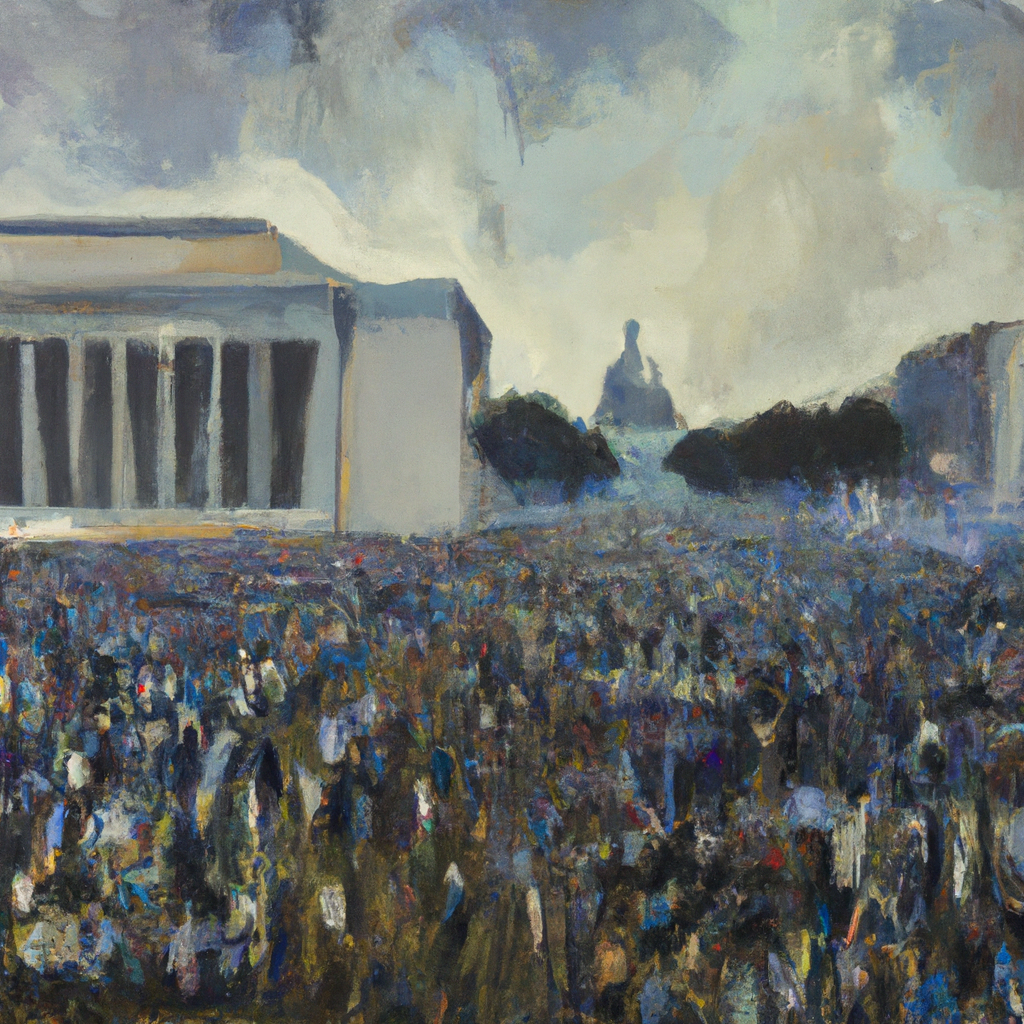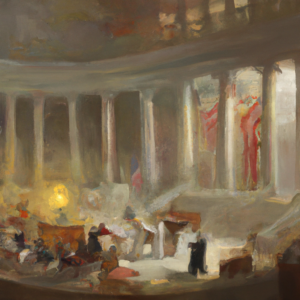As the current United States Supreme Court’s approval rating dips into the red, it is easy to forget other low points in judicial history. The Dred Scott decision is, by a wide margin, the lowest point in the Court’s history. However, there are other notable low points. One such case, Plessy v. Ferguson, 163 U.S. 537 (1896), established a doctrine that would cast a long shadow over the landscape of civil rights for decades. The decision, rendered in 1896, upheld the constitutionality of racial segregation under the guise of “separate but equal,” embedding a policy of systemic inequality that would take generations to dismantle. This blog will delve into the key points of this pivotal case, the story of those who challenged the status quo, and the enduring implications of the Court’s ruling.
Key Points
1. The Separate Car Act: The Separate Car Act was a Louisiana law mandating segregated railway carriages for black and white passengers. This legislation epitomized the institutionalization of racial segregation in the post-Reconstruction South.
2. The Plight of Homer Plessy: Homer Plessy, a man of mixed race, challenged this law by deliberately sitting in a whites-only car, asserting that the segregation violated his constitutional rights under the Thirteenth and Fourteenth Amendments.
3. The Supreme Court’s Ruling: In an 8-1 decision, the Supreme Court upheld the Separate Car Act, cementing the doctrine of “separate but equal” and legitimizing a wide array of discriminatory practices that would persist for over half a century.
As we explore the fact pattern and the journey of those who stood against segregation, we will uncover the profound human stories behind this landmark case.
Fact Pattern
In the bustling streets of New Orleans, Homer Plessy, a shoemaker by trade and a man of seven-eighths white and one-eighth black ancestry, found himself at the center of a pivotal legal challenge. The Separate Car Act required railway companies to provide separate but equal accommodations for black and white passengers. Plessy, light-skinned enough to pass as white, deliberately sat in a whites-only car, testing the boundaries of this unjust law.
Arrested and charged with violating the Separate Car Act, Plessy argued that the segregation laws violated the Thirteenth Amendment, which abolished slavery, and the Fourteenth Amendment, which guarantees equal protection under the law. His case, supported by the Comité des Citoyens, a group of prominent Black, white, and Creole citizens in New Orleans, aimed to challenge the pervasive injustice of racial segregation.
The case progressed through the courts, ultimately reaching the Supreme Court. On May 18, 1896, Justice Henry Billings Brown delivered the majority opinion, which would become a cornerstone of segregationist policies. The Court’s ruling in Plessy v. Ferguson upheld the legality of racial segregation, declaring that separate facilities for black and white passengers were constitutional as long as they were equal. This decision entrenched the systemic discrimination that would define the American South for decades.
Issues before the Court
Issue 1: Does the Separate Car Act, mandating segregated railway carriages, violate the Equal Protection Clause of the Fourteenth Amendment?
Issue 2: Does the enforced racial segregation of public facilities constitute a badge of servitude prohibited by the Thirteenth Amendment?
Issue 3: Can separate facilities ever truly be equal in practice, given the inherent discrimination in their enforcement?
Law before the Decision
Prior to the decision in Plessy v. Ferguson, the prevailing legal framework was guided by the post-Civil War Amendments, particularly the Thirteenth Amendment, which abolished slavery, and the Fourteenth Amendment, which guaranteed equal protection under the law. However, the interpretation and enforcement of these amendments varied significantly, especially in the Southern states where Jim Crow laws sought to maintain racial hierarchies.
The Court’s Breakdown of Each Issue
Issue 1: Does the Separate Car Act violate the Equal Protection Clause of the Fourteenth Amendment?
The majority opinion, authored by Justice Henry Billings Brown, held that the Separate Car Act did not violate the Equal Protection Clause. The Court reasoned that the law was a reasonable exercise of state police power aimed at promoting public order and comfort. Justice Brown argued that segregation did not in itself imply the inferiority of African Americans. He stated that the Constitution does not guarantee social equality, only political and civil equality, and that separate facilities for blacks and whites did not denote inequality as long as they were equal in quality.
Issue 2: Does the enforced racial segregation of public facilities constitute a badge of servitude prohibited by the Thirteenth Amendment?
Justice Brown dismissed the argument that segregation constituted a form of servitude. He contended that the Thirteenth Amendment, which abolished slavery, did not cover distinctions based on race if those distinctions did not reimpose slavery or involuntary servitude. The Court asserted that the segregation law was a matter of social policy, not servitude, and thus did not violate the Thirteenth Amendment.
Issue 3: Can separate facilities ever truly be equal in practice, given the inherent discrimination in their enforcement?
The majority did not engage deeply with this issue, assuming that separate facilities could be made equal and failing to recognize the inherent inequality and discrimination in enforced separation. The Court accepted the state’s assurances of equality at face value without examining the practical realities and impacts of segregation on African Americans.
The Majority Opinion
The majority opinion in Plessy v. Ferguson (1896) was driven by a strict and narrow interpretation of the Constitution. Justice Brown’s opinion asserted that the law was neutral and did not violate the Equal Protection Clause as it applied equally to both races. The ruling effectively ignored the lived realities of African Americans, who experienced profound inequalities in education, transportation, and other public services. The majority opinion maintained that any feelings of inferiority among African Americans were subjective and not caused by the segregation laws themselves.
Justice Brown’s legal reasoning was steeped in the belief that the law could create a separate but equal society, failing to acknowledge that segregation inherently created and perpetuated inequalities. This ruling legitimized the separate but equal doctrine, giving legal cover to widespread segregation and discrimination that would persist for over half a century.
The Minority Opinion
Justice John Marshall Harlan’s dissent in Plessy v. Ferguson stood in stark contrast to the majority opinion. Harlan’s dissent was rooted in a broader and more inclusive interpretation of the Constitution. He famously declared, “Our Constitution is color-blind and neither knows nor tolerates classes among citizens.” Harlan argued that the Separate Car Act was a thinly veiled attempt to perpetuate racial discrimination and that enforced segregation inherently stigmatized African Americans, branding them as inferior.
Harlan contended that the Constitution’s guarantee of equal protection under the law meant that all citizens should be treated equally, without regard to race. He criticized the majority for failing to recognize that the separation itself imposed a badge of inferiority, violating both the Thirteenth and Fourteenth Amendments. Harlan’s dissent anticipated the future civil rights movement’s arguments and laid the groundwork for the eventual overturning of the separate but equal doctrine in Brown v. Board of Education (1954).
Conclusion
The decision in Plessy v. Ferguson, 163 U.S. 537 (1896), entrenched the doctrine of separate but equal, legitimizing racial segregation and discrimination. The majority opinion, narrowly interpreting the Constitution, failed to recognize the inherent inequalities and harms of segregation. In contrast, Justice Harlan’s dissent powerfully articulated the principles of equality and justice that would eventually prevail in the fight for civil rights. The legacy of Plessy v. Ferguson serves as a reminder of the importance of judicial vigilance and the ongoing struggle to achieve true equality under the law.




